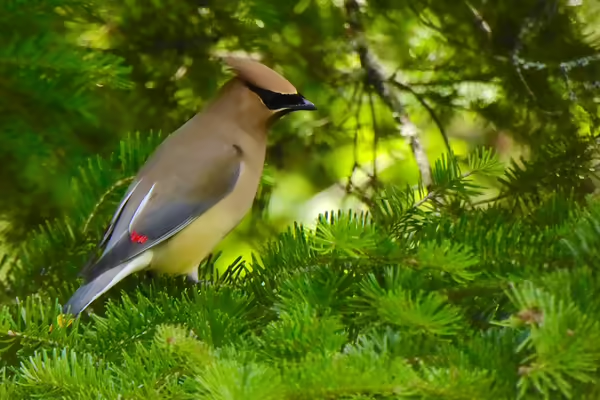
URBANA, Ill. — People plant gardens for food, flowers, and function, but planting for the birds can be beautiful and beneficial to the environment. What if instead of storebought bird seed in a feeder, gardens could include a buffet of different foods for birds while also being a beautiful addition to any landscaping?
How to Attract Birds to Yards
Gardeners sometimes have to make tough choices. Should we try growing hot peppers this year? Do we go with a climbing hybrid tea rose or along the fence? Is that spot too shady for coneflowers?
Sometimes the answers are obvious. Should we plant things for the birds? Yes. Choosing plants with birds in mind not only helps support bird populations but it can also be a great way to add color and beauty to landscape.
Birds need food, water, and shelter to survive. Shelter from weather and predators can be found in trees and shrubs. Providing water could be as simple as a bird bath or as complex as a large pond. Food comes in many different forms and a yard can offer a variety, especially when planting native plants.
Birds have a varied diet that, depending on the species, could include seeds, fruit, bugs, worms, and even nectar. Caterpillars are a critical part of many baby bird diets, so planting food for caterpillars through host plants and other insects can support future generations.
Having a variety of plants, such as those in the following list, can ensure a garden meets different needs.
- Pale purple coneflowers. A beautiful and easily recognizable flower that blooms in the middle of summer. While enjoying the flower, many pollinators will enjoy the nectar, and it is a host plant for the silvery checkerspot butterfly. In the fall and early winter, the seeds of coneflowers are a favorite of finches.
- Oak trees. These keystone trees can feed over 500 species of caterpillars, according to research by entomologist Doug Tallamy. While trees aren’t often thought of as being important for pollinators, they can be a critical part of a habitat, providing both food and shelter.
- Eastern wahoo. A native understory tree related to burning bush. In addition to spectacular fall color, wahoo produces interesting berries that migrating fall birds enjoy.
- Wild columbine. It blooms in shades of red and yellow and is almost irresistible to hummingbirds returning to the area in May. The trumpet-shaped flowers provide a great source of nectar many native pollinators also enjoy.
Garden Care is for the Birds
In addition to what is planted, how a garden is cared for can also help birds. Leaving the leaves and dead stalks of plants up in the fall will provide places for insects to overwinter in addition to leftover seeds. Brown thrashers and towhees love picking through the leaf litter, looking for tasty morsels.
If a bird bath is provided, clean and disinfect it periodically to prevent the spread of disease by scrubbing it with a 10% bleach solution and then rinsing well.
Finally, minimize the use of pesticides. Insecticides poison the food just provided for the birds. This also applies to rodenticides. Using poison baits to kill mice, chipmunks, and other rodents runs the risk of accidentally poisoning hawks and owls. If control is needed and other exclusion options have not worked, snap traps are the most humane option. Relocating nuisance animals to areas like forest preserves is not only illegal in Illinois but also still usually a death sentence for the animal that is now in unfamiliar territory.
For more on gardening for the birds and coexisting with wildlife, connect with a local University of Illinois Extension office at go.illinois.edu/ExtensionOffice.
Jamie Viebach is an Illinois Extension horticulture educator for DuPage, Kane, and Kendall counties. Gardeners Corner is a quarterly newsletter from gardening experts around the state. Each issue highlights best practices that will make your houseplants, landscape, or garden shine in any season. Join the Gardener’s Corner email list at go.illinois.edu/GCsubscribe for direct access to timely tips.
PHOTO CAPTION: A cedar waxwing rests in an evergreen. Photo by Jamie Viebach, Illinois Extension.
Illinois Extension leads public outreach for University of Illinois by translating research into action plans that allow Illinois families, businesses, and community leaders to solve problems, make informed decisions, and adapt to changes and opportunities. Illinois Extension is part of the University of Illinois Urbana-Champaign College of Agricultural, Consumer and Environmental Sciences.